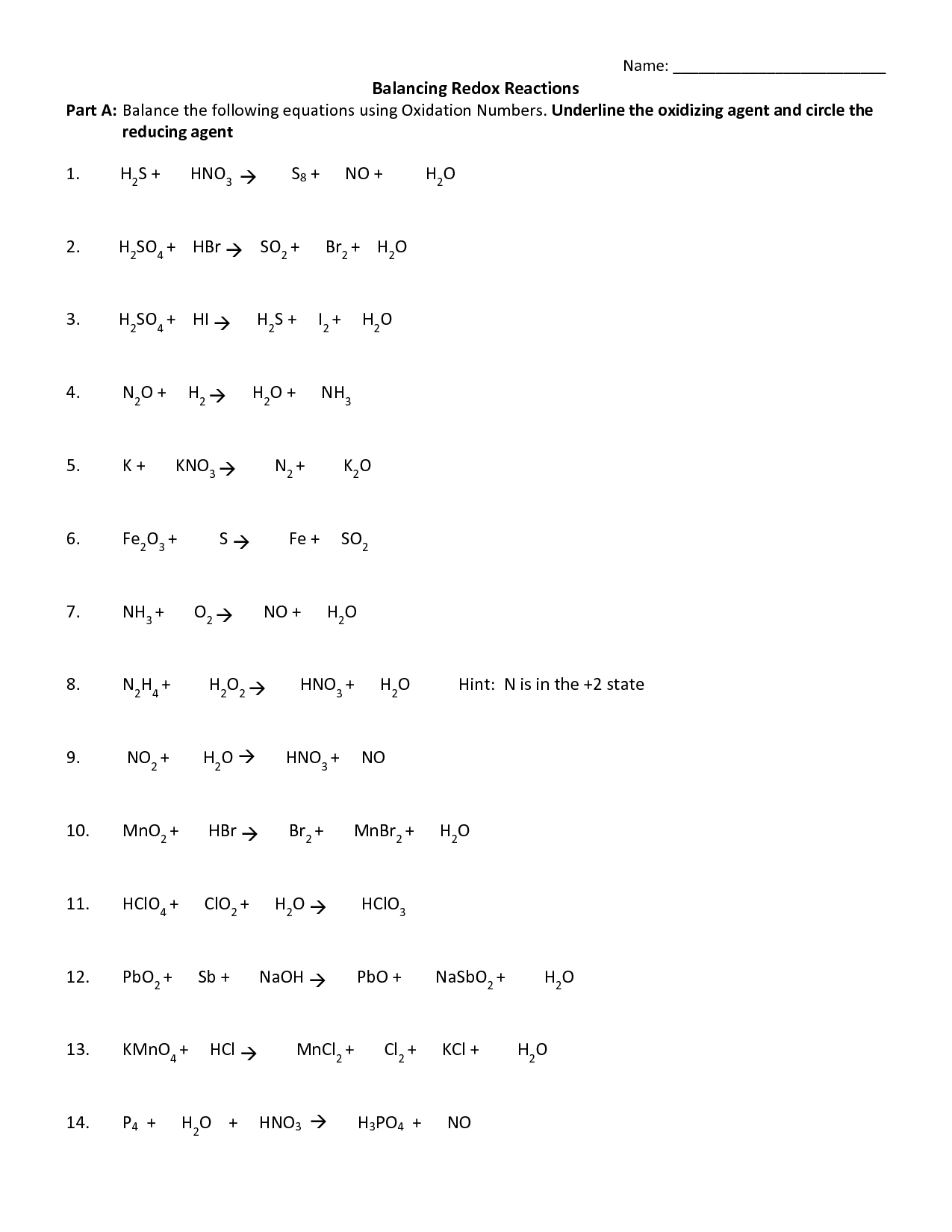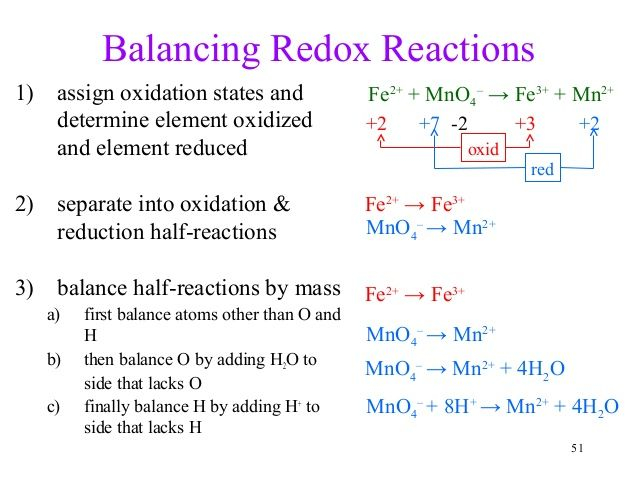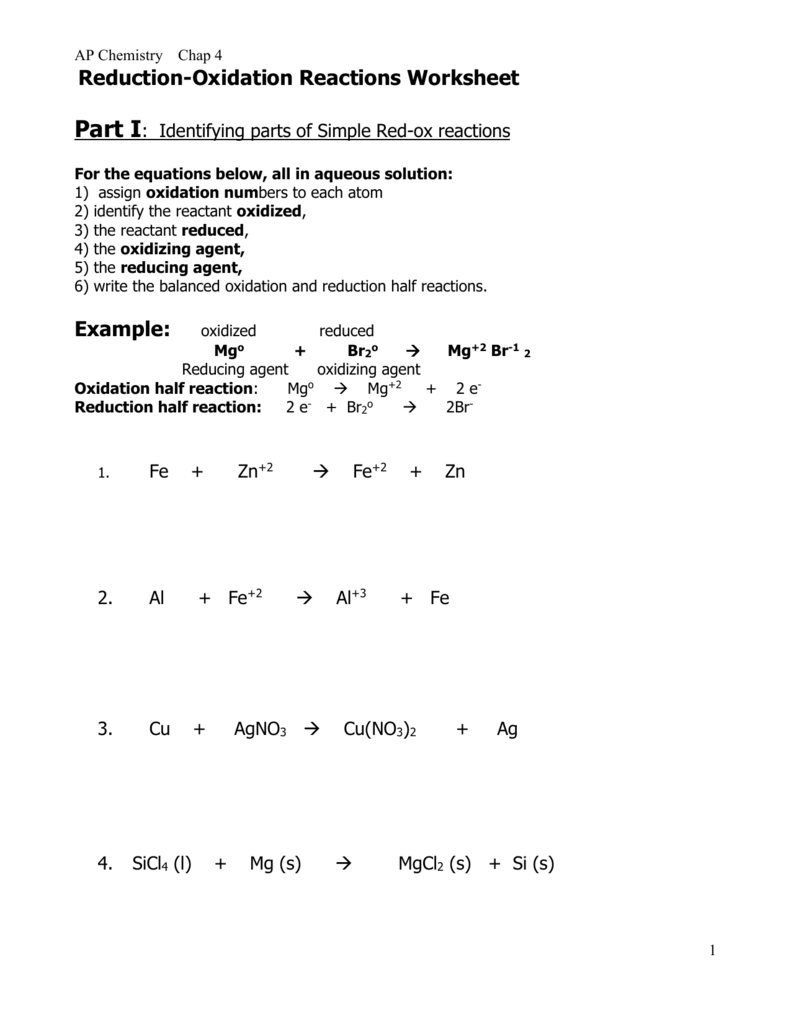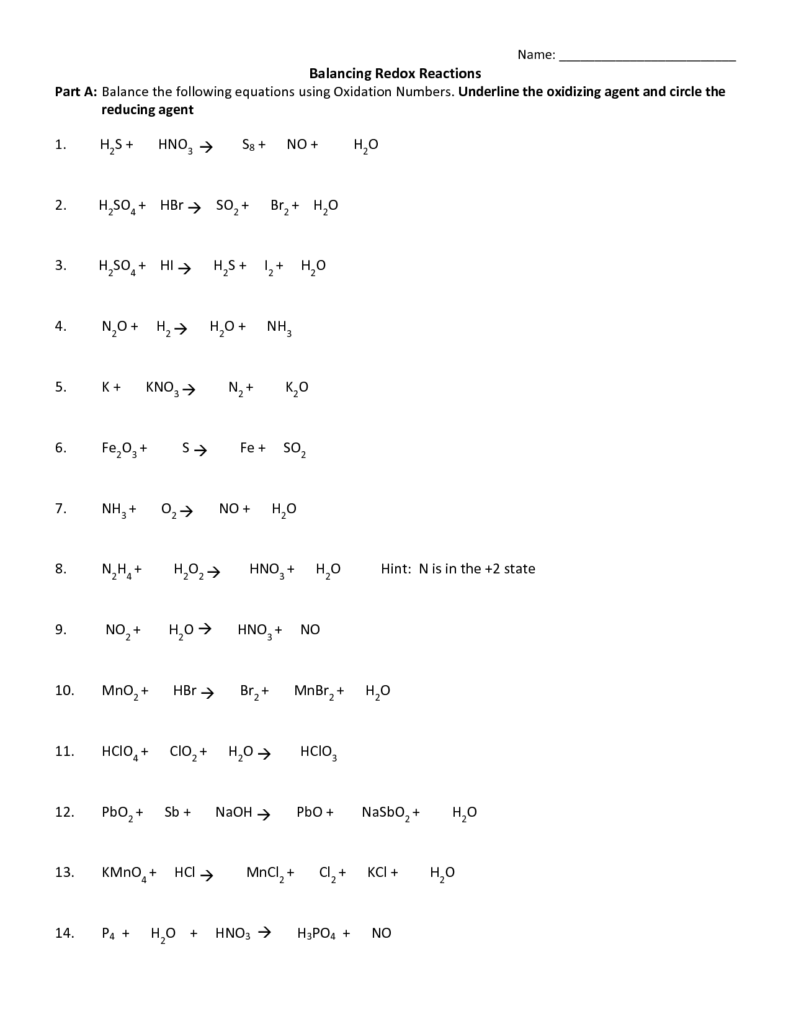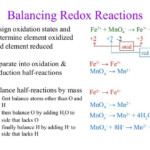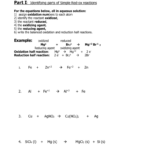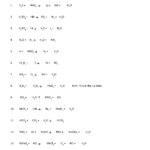Ap Chemistry Balancing Oxidation And Reduction Reactions Worksheet – A Chemistry Reactions Worksheet is a useful tool to teach students the concepts of chemical change. A chemical reaction involves the transfer of energy between reactants and products. This type of change is either irreversible or reversible. This happens when two molecules or atoms react to create a new product.
Chemical reactions are caused by changes in bond structure
Chemical reactions are processes that produce new molecules, usually by breaking or forming bonds between two substances. These reactions require energy because it takes energy to break bonds, and then release the product. Different types of bond structure produce different amounts of energy. A Lewis acid-base reaction, for example, produces a covalent bonds, in which the Lewis acid provides an electron pair, and the Lewis base receives one.
You can approximate the energy required for chemical reactions by looking at the bond strengths of reactants or products. These bond strengths change as a result of the chemical reactions. This energy is measured in terms of enthalpy, heat, and thermal energy. The energy of chemical reactions is also expressed at the atomic level as potential energy. This idea of energy is not often explained in chemistry textbooks.
These involve energy transfer between products and reactants.
In chemical reactions, energy is transferred from reactants to products. The form of bonds is how the energy is transferred. This energy is called bond energy and is measured in kJ*mol$-1. The amount of energy that can be transferred in a chemical reaction depends on the amount of energy that the reactants and products have.
To understand how energy is transferred, we must first understand how chemical reactions occur. These reactions are known as energy change. This is energy absorption or release that occurs when chemical bonds break. This energy can be either heat or light depending on the products and reactants. Energy transfer is caused by the difference in chemical energy stored, also known as enthalpy.
They can be reversed
Reversible reactions are when both reactants and products are converted to each other in a chemical reaction. It occurs when the conversion of the reactants to the products occurs simultaneously. This reaction is the most common in chemistry. This is how it works.
Reversible reactions between substances and gases can either be irreversible or reversible. A product is when an acid reacts to an alcohol. In order for this reaction to occur, the gas molecules that were previously bound to the solution must be released. The Dean-Stark apparatus separates the reactants and ensures that the desired product can be produced.
They are irreversible
There are several kinds of reactions in chemistry. Reactants and their surroundings will determine the type of reaction. Most chemical reactions are irreversible. They involve the conversion of two or more reactants into one or more products. Sometimes, the reaction is enhanced with the help of a catalyst.
A reversible reaction is one that occurs in a closed container. For example, ammonium chloride can turn into ammonia and hydrogen chloride when heated. When it cools, it is converted back to ammonium chloride. The two reactants then recombine.
They involve redox reactions
Redox reactions involve the transfer of electrons between different chemical species. The oxidation process involves the loss of one or more electrons by the oxidizing agent while the reduction process involves the gain of electrons by the reducing agent. Redox reactions can affect a variety of environmental variables, including contaminant mobility and degradation. For example, hexavalent chromium is highly toxic when oxidized. Trivalent chromium, on the other hand, is less toxic and less mobile. Likewise, arsenic, uranium, and selenium are less mobile under oxidizing conditions.
Redox reactions can also occur during decomposition processes. This results in a smaller chemical compound. For example, if CaCO3 reacts with CO2, it will decompose into CaO and CO2, but the oxidizing agent gains an electron. An oxidizing agent can also gain oxygen and bring it into the molecule. The most common oxidative reactions in organic Chemistry include dealkylation and aromatic ring cleavage.
They contain bases and acids
A Chemistry reaction is when acids and bases react with one another to create a new substance. A salt is a substance that forms when an acid reacts with a base. Salts are crystalline substances that are soluble in water. They are also bitter in taste. There are many theories about the way acid and bases react with each other.
Both acids and bases play important roles in chemical reactions and in daily life. For example, the presence of acid in the body helps keep the internal environment stable. Acidity is also important in baking cakes. The acidity of a lake determines whether it can sustain aquatic life. A large number of chemical reactions involve either acids and bases. Both acids and bases play an important role in biological processes. The pH and alkalinity in the soil and water are crucial for animals and plants. As such, the chemistry of acids and bases is ubiquitous and permeates our daily lives.
